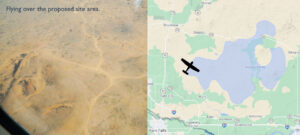Learning more about the Lava Ridge Wind project
UPDATE: The Bureau of Land Management extended the public comment period by 30 days until Oct. 20.Your input is extremely important and can help shape the outcome. For details, visit the BLM's Lava Ridge Wind Project website.This is an opportunity to let the BLM know that you want them to study and analyze the cultural, land, wildlife, and other environmental impacts of the project, as well as its effects on communities surrounding the area before they make a decision. Whether wind energy makes sense in this location is another important aspect of any clean energy proposal. Original post from Aug. 30, 2021:Magic Valley Energy, LLC recently proposed its Lava Ridge Wind project, which includes hundreds of wind turbines on Bureau of Land Management lands near Dietrich. If built, it would be among the largest in the western U.S. and play an important part in Idaho’s and the nation’s transition away from fossil fuels and their negative impacts on climate change. Wind and solar farms – paired with batteries – are cheaper, cleaner, and more reliable than volatile methane gas-powered plants and will help lead to a clean energy future. The Idaho Conservation League is excited to see proposals for new renewable energy projects, but we are simultaneously concerned about Lava Ridge Wind’s potential impacts on wildlife and their habitat, views from Craters of the Moon National Monument and Preserve, access to recreation, and disturbances to local communities. To get a sense of the scale of the project and its possible effects, ICL staff recently teamed up with Ecoflight to fly over the proposed location and nearby wind farms. With local journalists and county commissioners, we viewed the large project area and envisioned its relationship to the landscape.  We walked away with a greater understanding of how it would fit into the landscape, but the flight raised additional questions concerning wildlife, cultural impacts to the Shoshone-Bannock Tribes, effects on the Minidoka National Historic Site, and reactions from local community members. We cannot unduly sacrifice these important values for the sake of clean energy. But we also must build clean energy infrastructure to replace fossil fuels. By learning more about the project and its impacts, ICL will seek ways to avoid the most likely negative ones and mitigate others.
We walked away with a greater understanding of how it would fit into the landscape, but the flight raised additional questions concerning wildlife, cultural impacts to the Shoshone-Bannock Tribes, effects on the Minidoka National Historic Site, and reactions from local community members. We cannot unduly sacrifice these important values for the sake of clean energy. But we also must build clean energy infrastructure to replace fossil fuels. By learning more about the project and its impacts, ICL will seek ways to avoid the most likely negative ones and mitigate others.
To learn more and act
You can learn more about the Lava Ridge Wind project and voice your opinion to the Bureau of Land Management. The BLM is hosting workshops as part of the “scoping” process to consider permitting the project. During the scoping phase, your input is extremely important and can help shape the outcome. The workshops will be held virtually at 2 p.m. Wednesday, Sept. 8, and 6 p.m. Thursday, Sept. 9. To register, visit the BLM's Lava Ridge Wind Project website.This is an opportunity to let the BLM know that you want them to study and analyze the cultural, land, wildlife, and other environmental impacts of the project, as well as its effects on communities surrounding the area before they make a decision. Whether wind energy makes sense in this location is another important aspect of any clean energy proposal. ICL’s Climate and Public Lands teams work together on evaluating projects like this to take a comprehensive look at whether to support specific clean energy projects and if so, where and how they can be built with minimal impacts.

